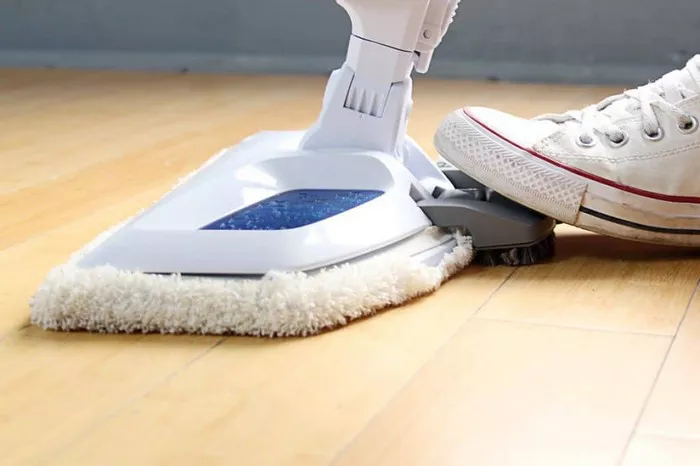Maintaining a clean environment is essential for both hygiene and aesthetics. Among the various cleaning tasks, mopping stands out as a fundamental practice for keeping floors pristine. However, the effectiveness of mopping largely depends on how it’s done. Correctly utilizing a mop not only ensures a spotless surface but also prolongs the life of your floors. In this comprehensive guide, we’ll delve into the nuances of mopping, exploring different types of mops, preparation, techniques, maintenance, safety precautions, and troubleshooting methods.
Types of Mops
Before delving into the mopping process, it’s crucial to understand the different types of mops available and their respective applications. Here are some common varieties:
1. Flat Mops: These mops feature a flat, rectangular head attached to a handle. They are ideal for smooth surfaces like hardwood, tile, or laminate floors.
2. String Mops: Characterized by their traditional design with strands of yarn or microfiber, string mops are versatile and can be used on a variety of surfaces, including uneven or textured floors.
3. Steam Mops: Utilizing the power of steam, these mops sanitize and clean floors effectively, making them suitable for households with pets or small children.
Preparation
Preparation is key to achieving optimal results when mopping. Follow these steps to ensure your mop is ready for action:
1. Select the Right Cleaning Solution: Choose a cleaning solution that is appropriate for your floor type. For example, use a mild detergent for hardwood floors and a disinfectant for tile or linoleum.
2. Clear the Floor: Remove any obstacles or debris from the floor to prevent the mop from spreading dirt around.
3. Fill the Bucket: Fill a bucket with warm water and add the appropriate amount of cleaning solution according to the manufacturer’s instructions.
Mopping Technique
Mastering the mopping technique is essential for achieving streak-free, thoroughly cleaned floors. Follow these steps for optimal results:
1. Dip and Wring: Dip the mop head into the cleaning solution, then wring out excess liquid to prevent over-saturation.
2. Start from the Farthest Point: Begin mopping from the farthest corner of the room and work your way toward the entrance to avoid stepping on freshly cleaned areas.
3. Use Figure-Eight Motion: Employ a figure-eight motion while mopping to cover a larger surface area and ensure even distribution of the cleaning solution.
4. Overlap Strokes: Overlap each mop stroke slightly to avoid leaving streaks or missed spots.
5. Change Water as Needed: Replace the cleaning solution if it becomes dirty to prevent spreading grime around.
Maintenance
Proper maintenance of your mop is essential for prolonging its lifespan and ensuring effective cleaning. Follow these tips for keeping your mop in top condition:
1. Wash Mop Head Regularly: After each use, rinse the mop head thoroughly with clean water and allow it to air dry. For machine-washable mop heads, follow the manufacturer’s instructions for washing.
2. Sanitize: Periodically sanitize the mop head by soaking it in a solution of water and bleach or vinegar.
3. Replace Mop Head: If the mop head shows signs of wear or becomes ineffective, replace it promptly to maintain cleaning efficiency.
Safety Tips
While mopping may seem like a simple task, it’s essential to observe safety precautions to prevent injuries. Here are some safety tips to keep in mind:
1. Keep Mop Close to Body: Hold the mop handle close to your body to maintain balance and avoid strain on your arms and back.
2. Use Caution on Wet Floors: Be cautious when mopping wet floors to prevent slips and falls. Consider using warning signs to alert others to the wet surface.
3. Avoid Overextending Arms: Avoid overextending your arms while mopping to prevent strain or injury. Take frequent breaks if needed to rest your muscles.
Troubleshooting Common Issues
Even with the correct technique, you may encounter common issues when mopping. Here’s how to address them:
1. Sticky Residues: If you notice sticky residues on the floor after mopping, rinse the mop head thoroughly and use a clean solution to re-mop the area.
2. Streaky Floors: Streaky floors may result from excess cleaning solution or improper mopping technique. Adjust the amount of cleaning solution used and ensure even strokes while mopping.
FAQs
Q1: Can I use the same mop for different types of floors?
A1: It’s best to use separate mops for different types of floors to prevent cross-contamination and ensure optimal cleaning results.
Q2: How often should I mop my floors?
A2: The frequency of mopping depends on factors such as foot traffic and spills. In general, high-traffic areas may require mopping once or twice a week, while less frequently used areas can be mopped less frequently.
Q3: Can I use vinegar as a cleaning solution for all floor types?
A3: While vinegar is a natural and effective cleaner, it may not be suitable for all floor types. Avoid using vinegar on hardwood floors, as it can cause damage to the finish.
Conclusion
Mastering the art of mopping is essential for maintaining clean and hygienic living spaces. By following the techniques outlined in this guide and incorporating proper maintenance practices, you can achieve sparkling floors that enhance the overall appearance of your home or workspace. Remember to prioritize safety and address any issues promptly to ensure a smooth mopping experience every time.

